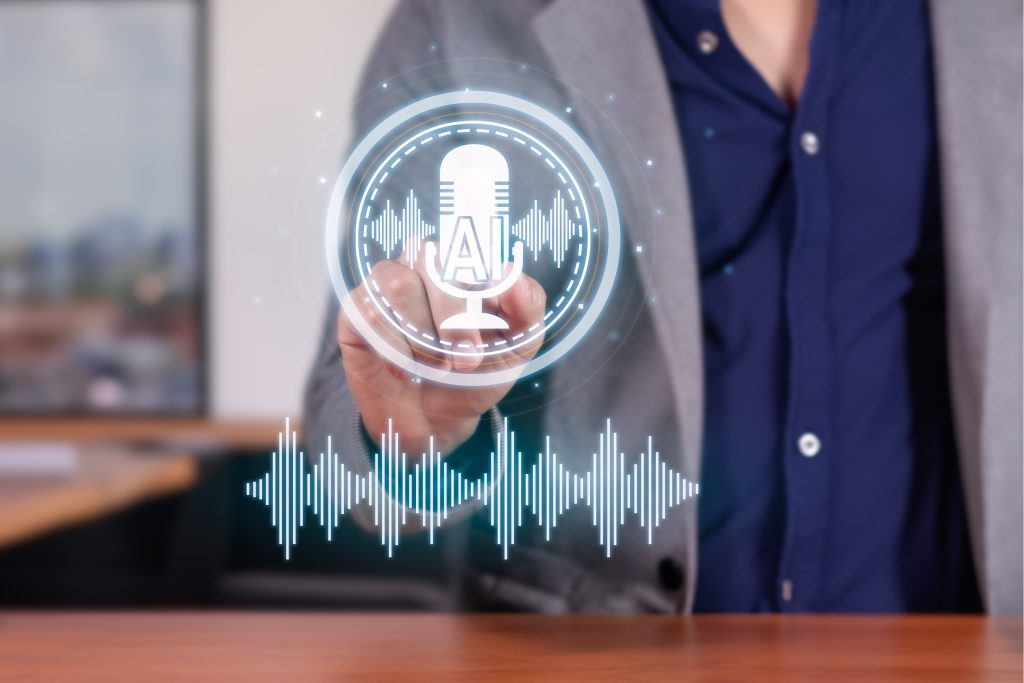Complementing, Not Replacing, the Human Voice

In conversations about artificial intelligence (AI) text-to-speech (TTS), a common critique often arises: “AI voices will never capture the nuances of the human voice.” While this perspective is valid to some extent, it misses a critical point. The value of AI TTS isn’t about replacing human voices but enhancing their utility in ways that align with the inevitability of technological advancement. Denial of this inevitability, or dismissing it outright, risks missing the opportunities AI TTS offers to the future of work and human expression.
Quality and Value at Both Ends of the Spectrum

Like any innovation, AI TTS spans a spectrum of quality and value. At the lower end, you’ll find applications focused on cost-efficiency and basic functionality. These models serve their purpose in creating accessible tools for education, quick content production, or low-budget applications. On the higher end, premium AI TTS models aim to replicate the subtle nuances of human emotion and expression, inching closer to indistinguishability from real voices.
To dismiss AI TTS as incapable of ever matching human expression ignores the complexity of what goes into creating voice models. From pitch and gates to mels (melody or human perceived sound frequency) and text-to-speech alignments, the process involves a blend of human creativity and advanced machine learning. Some models integrate recordings of human voices, iteratively building and refining the emotional and tonal fidelity. Others incorporate transcriptions and linguistic rules to ensure natural pacing and emphasis. If done well, even a trained ear might struggle to distinguish between an AI-generated voice and a human one.
Key Terms in Text-to-Speech (TTS)
AI text-to-speech isn’t as simple as it will never be better than the human voice. Understanding the terminology in Text-to-Speech (TTS) systems can shed light on the complexity and artistry behind generating high-quality AI voices. Below is a breakdown of some essential terms used in TTS development and modeling:
1. Mels
- Definition: Refers to Mel-frequency cepstral coefficients (MFCCs), which are representations of the short-term power spectrum of sound on a Mel scale.
- Purpose: Mels are used to convert audio signals into features that better align with human perception of sound. In TTS, they represent the spectrogram, a visual representation of the frequency content over time, which serves as an intermediate step before generating audio.
- Example Use: Mels are often input to a vocoder to synthesize speech from spectrograms.
2. Gate
- Definition: A mechanism in TTS models that helps determine when to stop generating audio.
- Purpose: It ensures that the system doesn’t produce excessive or incomplete output by predicting the end of a sentence or phrase during the synthesis process.
- Example Use: The gate helps manage the length of audio to match the text input, ensuring coherence.
3. Pitch
- Definition: Refers to the perceived frequency of sound, which determines how high or low a voice sounds.
- Purpose: Pitch adjustments are used to add natural variation and emotion to synthesized speech, helping it sound more human-like.
- Example Use: Changing the pitch can make a voice sound more enthusiastic, questioning, or assertive.
4. Alignment
- Definition: The process of mapping text input to the corresponding audio output in TTS models.
- Purpose: Alignments ensure that each phoneme or word matches its correct position in the synthesized audio. It’s a critical step for maintaining synchronization between text and speech.
- Example Use: Alignments are visualized in attention maps to monitor how well the model learns the relationship between text and audio.
5. Text
- Definition: The raw or processed input (textual data) that serves as the basis for TTS synthesis.
- Purpose: The text is converted into phonemes or linguistic features, which guide the audio generation process.
- Example Use: Text normalization transforms raw text into a format the TTS system can interpret correctly, such as expanding “Dr.” to “Doctor.”
6. Waveform
- Definition: The raw audio signal generated as the final output of a TTS model.
- Purpose: Waveforms are what you hear when the TTS system speaks. They represent the amplitude of sound over time.
- Example Use: Vocoders like WaveNet or HiFi-GAN generate high-quality waveforms from intermediate spectrogram representations.
7. Vocoder
- Definition: A component in TTS systems that converts spectrograms (e.g., mels) into audio waveforms.
- Purpose: The vocoder is responsible for producing natural and high-fidelity sound from the processed features.
- Example Use: Popular vocoders include WaveNet, Tacotron’s Griffin-Lim, and HiFi-GAN.
8. Prosody
- Definition: Refers to the rhythm, stress, and intonation of speech.
- Purpose: Prosody adds emotional and contextual nuance to TTS output, making it more expressive and engaging.
- Example Use: Adjusting prosody can make speech sound joyful, serious, or inquisitive.
9. Synthesis
- Definition: The actual process of generating speech audio from text input.
- Purpose: The synthesis process involves converting processed text into spectrograms and then into audio waveforms.
- Example Use: Synthesis can involve multiple steps, such as text preprocessing, feature extraction, and waveform generation.
The Misconception: “AI Voices Aren’t Real”

When critics say, “AI voices will never match human voices,” what are they truly claiming? Are they questioning the authenticity of the human voice being modeled? Are they dismissing the iterative processes that involve real human voices as the foundation for these models? The irony lies in the fact that many TTS systems rely heavily on human voices to create what critics label as “non-human.”
The reality is that AI TTS is not an “either-or” proposition. It’s about blending the best of both worlds: the human touch in voice modeling and the computational efficiency of AI. As a practitioner of machine learning and AI, my goal is not to eliminate the human element but to extend its reach. If the line between human and AI voice becomes indistinguishable, it means I’ve done my job well—not by erasing humanity but by enhancing it.
The Use of Premium AI TTS in Storytelling

Take, for instance, my upcoming audio recording of Chapter 2, Understanding Cultural Dimensions. While I may use a premium Google voice model for this, does it matter if you can’t tell the difference? If the voice delivers the content with clarity, emotional resonance, and engagement, isn’t it fulfilling the same purpose as a human narrator? The question, then, isn’t about whether AI TTS can replace human voices but about how it can serve as a powerful tool in storytelling and communication.
What Denial Means for the Future of Work

A group of people in denial. Credit Envato.
Denial of AI TTS’s potential isn’t just shortsighted; it’s also risky. The future of work is rapidly evolving, and industries that dismiss AI tools often find themselves falling behind. Whether in education, media, or customer service, TTS is already reshaping workflows and accessibility. Clinging to the belief that AI voices will never “match” human voices overlooks the broader possibilities of collaboration between humans and AI.
For some, embracing AI TTS might mean adapting to new workflows or even redefining their creative roles. For others, it could mean finding opportunities to merge their unique human skills with AI’s capabilities, creating outcomes that are richer and more inclusive.
Conclusion: The Inevitable Transformation

The debate around AI TTS isn’t about whether it will replace human voices. Instead, it’s about how we choose to use it. Will we embrace it as a complement to human creativity, or will we resist it, only to fall behind in a world that continues to innovate?
For those who remain skeptical, I ask: What happens when the future arrives, and you’re still clinging to the past? The inevitability of AI TTS isn’t about erasing human voices—it’s about expanding what’s possible, amplifying human creativity, and reshaping the way we work and communicate. Whether you believe it or not, the future of AI TTS is already here. The question is, are you ready to be part of it?
See the full TTS audio from Chapter 2 of my book The Global Mindset
